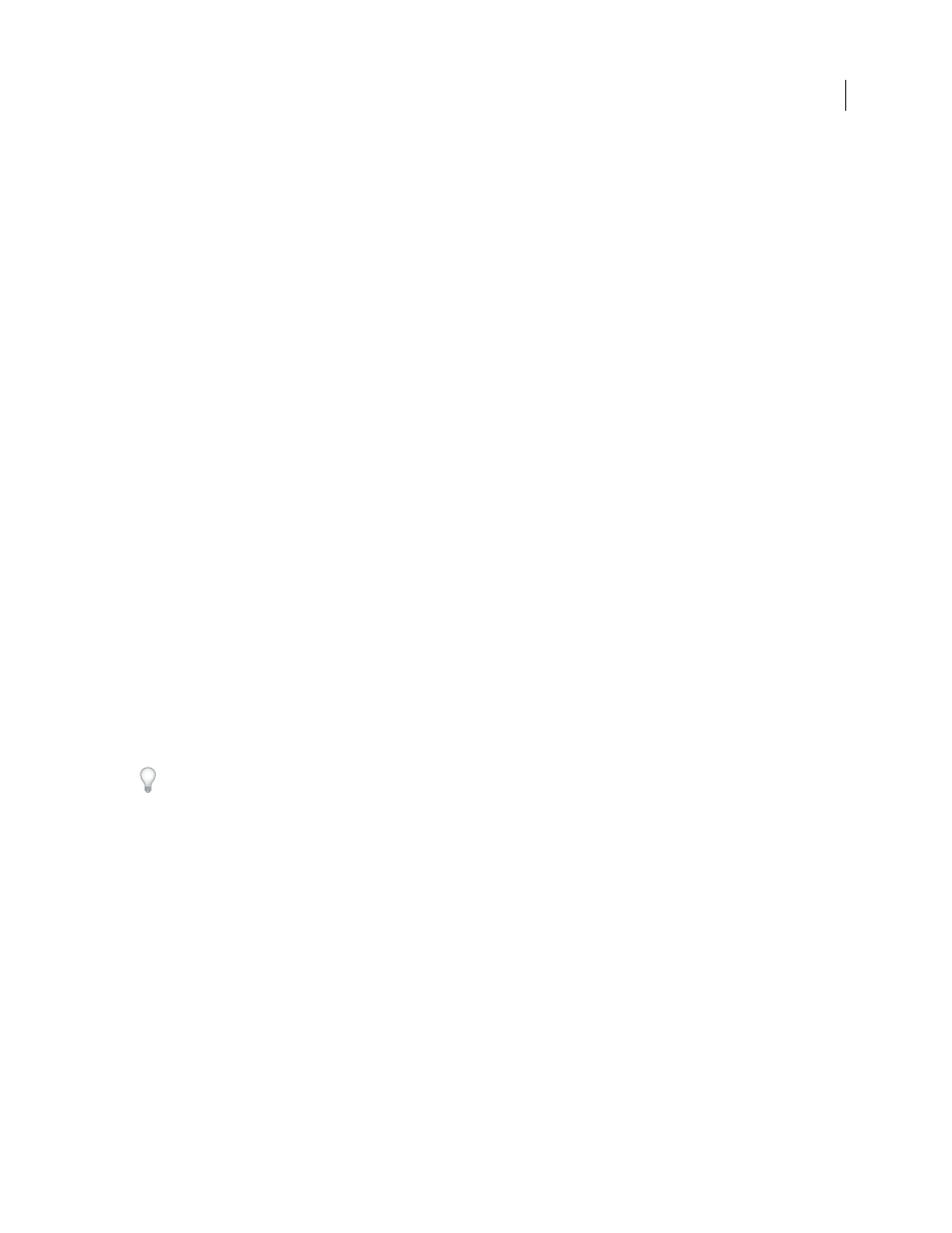Timecode effect – Adobe After Effects CS3 User Manual
Page 535

AFTER EFFECTS CS3
User Guide
530
You can specify the following Jitter options:
•
Baseline Jitter Max
Sets a maximum distance, in pixels, that characters are randomly moved above or below the
path after Baseline Shift is applied.
•
Kerning Jitter Max
Sets a maximum distance, in pixels, that characters are randomly moved apart from one
another along the horizontal axis after kerning and tracking are applied.
•
Rotation Jitter Max
Sets a maximum amount, in degrees, that characters are randomly rotated after Character
Rotation is applied.
•
Scale Jitter Max
Sets a maximum amount, as a percentage, that characters are randomly scaled after Horizontal
Scale and Vertical Scale are applied. For best results, characters should not scale greater than 100%.
Move vertices, circle centers, and tangents
•
To move the Vertex 1/Circle Center and the Tangent 1/Circle Point together, drag the outer circle of the Vertex
1/Circle Center.
•
To move only the Vertex 1/Circle Center, drag its cross hair.
•
To automatically snap the Tangent 1/Circle Point on top of the Vertex 1/Circle Center, select the Pen tool and then
click the outer circle of Tangent 1 (Windows) or Command-click the outer circle (not the cross hair) of Tangent 1
(Mac OS).
•
To snap the Tangent 1/Circle Point to increments of 45˚ from the Vertex 1/Circle Center, Shift-drag the outer circle
of Tangent 1.
•
To move Vertex 2 and Tangent 2 together, drag the outer circle of Vertex 2.
•
To move only Vertex 2, drag its cross hair.
Timecode effect
The Timecode effect creates a text overlay that displays timecode or frame number information on a layer. This effect
doesn’t modify timecode embedded from external sources, such as QuickTime.
Use text layers for greater control over text formatting and text animation. (See Text.)
Apply the Current Time Format animation preset to a text layer to show the current time in the format corresponding
to the project’s time display style.
This effect works with 8-bpc color.
Display Format
Specifies whether timecode is displayed in the SMPTE format, in frame numbers, or in feet and
frames of 35mm or 16mm film.
Time Units
Frame rate in frames per second (fps) to be used by this instance of the Timecode effect. This setting
affects only the numbers displayed by the Timecode effect; it has no influence on composition frame rate or the
frame rate of the layer’s source footage item.
Drop Frame
Select Drop Frame to generate drop-frame timecode or deselect it to generate non-drop-frame
timecode.
Starting Frame
The frame number assigned to the first frame of the layer.
Text Position
The position of the text overlay, in composition space.
Text Size
The size of text, in points.
